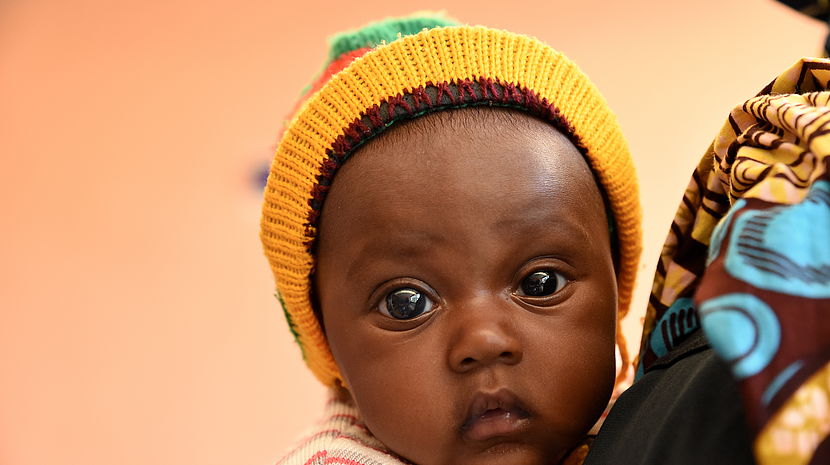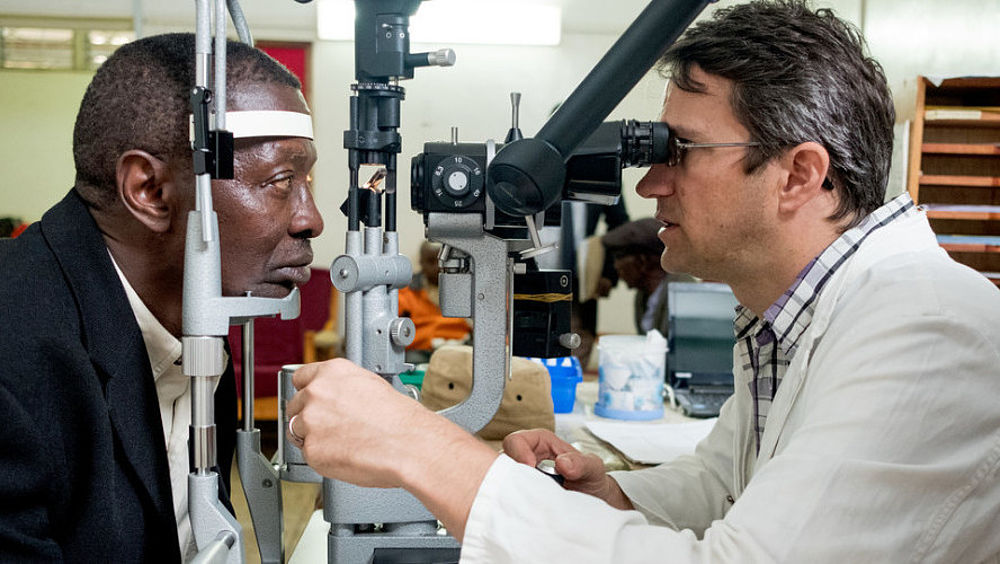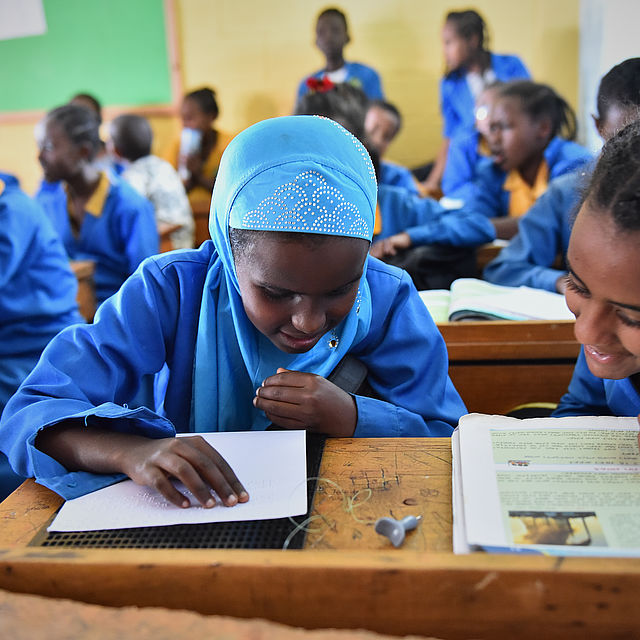CBM Makes Progress to Improve Glaucoma Treatment

Yasmine has congenital glaucoma. At CBM partner hospital, Acha Eye Hospital in Cameroon, she receives further eye examinations and treatment to control her eye pressure and preserve her vision. Her mother, Pauline was very happy with the services at the hospital. Glaucoma is predicted to almost double in Sub-Saharan Africa in the next two decades.
©CBM
The CBM supported project in Tanzania- The Kilimanjaro Glaucoma Intervention Programme – is conducting a randomized controlled trial to establish the efficacy in the treatment of glaucoma of laser surgery versus the more traditional use of Timolol eye drops.
World Glaucoma Week provides an annual opportunity to put the spotlight on glaucoma, the second leading cause of preventable, irreversible blindness worldwide.
To mark this year’s World Glaucoma Week, a CBM funded project in Tanzania, the Kilimanjaro Glaucoma Intervention Programme (KiGIP), is supporting free glaucoma screening at the eye department of Kilimanjaro Christian Medical Centre in Tanzania. World Glaucoma Week » Screening for glaucoma
Glaucoma is a condition where the eye’s optic nerve is damaged and if left untreated, causes vision loss. Increased pressure inside the eyeball causes a slow death of numerous single nerve fibres until all of them have died and the person affected is blind.
There are several reasons for an increased eye pressure. Usually, the drainage of the eye fluid (the aqueous) is reduced. Most of the time, patients suffer from this silent disease, the incidence of which increases with age. If a person has glaucoma, other family members are at a higher risk of also having the disease. There is no known cure, but the right interventions can manage the condition.
CBM’s Global Advisor on Research and Training Dr Heiko Philippin says that in the next two decades, the number of people with glaucoma is predicted to almost double in Sub-Saharan Africa, from 10 to 19 million. It remains one of the greatest challenges for eye health professionals working in Africa and other regions of the world to ensure that people are screened for the condition and receive the appropriate care.
Glaucoma research for early detection

Mushi Ebenezer (left), a glaucoma patient, has a checkup with Dr. Heiko Philippin at KCMC in Moshi, Tanzania on June 8, 2018.
© CBM/HaydukThe CBM supported project in Tanzania – The Kilimanjaro Glaucoma Intervention Programme – is conducting a randomized controlled trial to establish the efficacy in the treatment of glaucoma of laser surgery versus the more traditional use of Timolol eye drops.
The first outcomes of this research were published last year in the Lancet Global Health and indicated that laser surgery showed greater benefits because patients sometimes were not able to maintain uptake of their medication.
The study has now moved on to the next phase which consists of following up on the outcomes of the patients that participated in the original trial. As the deterioration in vision can be a gradual process, it is important to monitor the disease on a long-term basis to discover the best way to tackle the condition.
The study team is currently planning further studies on how to detect the condition earlier and how to further improve its management. Dr. Heiko Philippin who is leading on this work says:
"I hope that together with our partners we will be able to provide earlier and more effective interventions as well as rehabilitation to people with glaucoma so that more sight loss can be prevented, and lives improved."
The KiGIP discussed this and more during an online seminar, World Glaucoma Week » Community Eye Health Journal: Update on Glaucoma Webinar, which explored best practices for testing and managing eye care in low resource settings. The online seminar was offered by the International Centre for Eye Health at the London School of Hygiene and Tropical Medicine.
